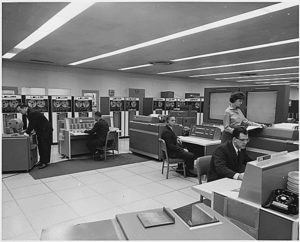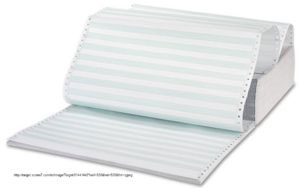
A Brief History of MRP – Materials Requirements Planning
The Birth of Manufacturing
Thousands of years ago, when someone needed something, they had to build it themselves. Through the generations, some people began to be recognized for their skills in building and they were asked to build things for other people. A business was born. Eventually, these new businesses got very busy and, in order to maintain their demand, they had to establish priorities in their current processes.
Now known as manufacturers, these business owners had to ask themselves a few key questions to help get their processes in order:
- What kinds of material will be needed?
- How much material will I need to fulfill these orders?
- When will the material need to be available for each project?
Step back in time
To help answer these questions, the manufacturers made up a calendar, put together lists and tried to match up the supply with the demand. Over time, some methods for planning were proven and began to be commonly used in business.

1. Paper and Pencil
Ledger books or paper spreadsheets were once the best methods available. Slide Rules helped perform the calculations and were used for many years.

2. Computers
Computers aided in demand planning and added important tools as Electronic Spreadsheets. Software for computers was later developed to combine the previously used tools into a common platform or program. In the early days of computing, computers were only owned by Universities, Government agencies and very large businesses. These computers were known as “mainframe computers”. Mainframe computers were very large and would take up entire walls within a room.
At this time, most companies that needed to have computing work done – like manufacturers scheduling their materials for demand – had to buy computer time from someone who had a computer. Buying computer time was extremely expensive and, as a result, Materials Requirement Planning (MRP) software programs were written to be very efficient with the amount of computing time required to complete the process. The programs were written to only compute the full calculation once per week and then again on one or more nights during the week. During a weekend, it was not uncommon to have the MRP Process run for 14 hours or more.
The MRP results were generally available through Printed Reports and not from a screen view. The programs would print out thousands and thousands of pages of paper reports so that Planners could make decisions on what parts to buy or what jobs to open for Production to make.Revolution Group
Planners would then fill out paper purchase requests and hand deliver them to the Purchasing Department where shop orders would be created and matched up with any routing operations documents. Once completed, a Bill of Material lists for production was created to make the parts. With some level of data entry, back to the Program, to record that the planning process had been completed.
The Process had to be completed by the time the next MRP Run was scheduled or the planning that was partially completed would become useless.

MRP Today
Today we have very powerful computers with a very small footprint. Most home computers are more powerful today than many of the giant mainframe computers were when you had to buy computer time from the University.
Material Planning programs now include the entire business process and are known as ERP systems (Enterprise Resource Planning), not just the materials as in the past with an MRP system (Material Requirements Planning). MRP programs are now just one module or screen within an ERP System.
Great improvements have been made in Material Planning from its beginnings to now. Now we are bothered when our MRP processes for more than 5 minutes, when just a few years ago it was not unusual to wait 14 hours to complete.
Continue to follow the next blog in my series examining Material Requirements Planning. Next month: Manufacturing Process Methods Compared. Read our past blog “What are ERP and MRP”.

